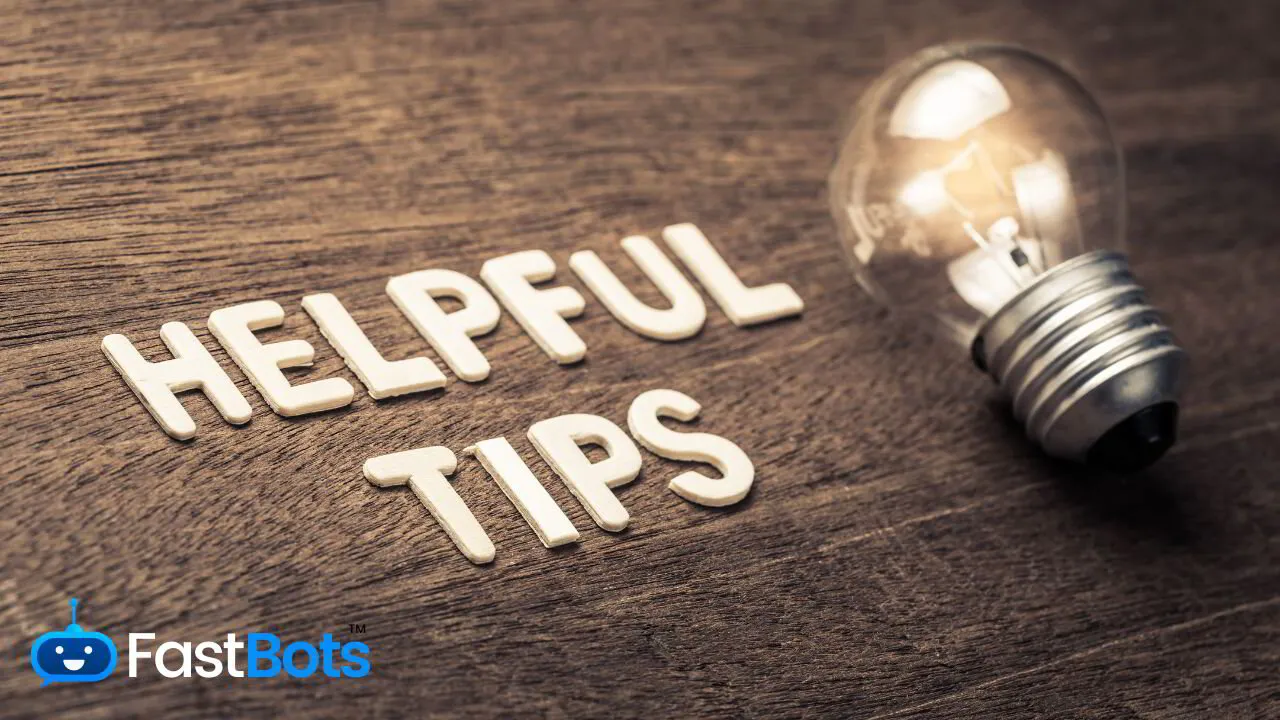In today's fast-paced world, chatbots have become an essential tool for businesses to automate customer support and streamline lead generation. With a white-label chatbot, you can customise the user experience to match your brand and establish a seamless customer interaction. In this article, we will explore some essential tips for building your own custom white-label chatbot to help you stay ahead of the competition.
Before diving into the creation process, it is crucial to define the purpose and scope of your chatbot. Consider what objectives you want your bot to achieve, like assisting customers in troubleshooting, answering frequently asked questions, or capturing leads. Taking the time to understand its mission will enable you to create a chatbot that better aligns with your business goals and operations.
As you embark on this journey, keep in mind that incorporating a consistent and cohesive brand experience is paramount. Ensure that your chatbot reflects your company’s logo, colours, and style, and tailor its content and responses to align with your industry, products, and services. By carefully curating these elements, you will lay the groundwork for a successful custom white-label chatbot that delivers top-notch and tailored customer interaction.
Understanding white-label Chatbots
When building a custom white-label chatbot, it's crucial for you to have a solid understanding of what it is and its essential components. A white-label chatbot is a pre-built, customisable chatbot solution that allows you to brand and modify it according to your specific needs. These chatbots can be integrated into your company's existing communication infrastructure, providing a personalised customer experience while maintaining brand consistency.
Before diving into creating your chatbot, it's important to familiarise yourself with some key concepts:
- Rule-based vs. AI-based: Chatbots can be either rule-based or AI-based. Rule-based chatbots rely on a predetermined set of rules to respond to customer queries, while AI-based chatbots utilise natural language processing (NLP) and machine learning to understand and respond to open-ended conversations. AI-based chatbots, like ChatGPT, offer greater flexibility in terms of understanding user queries.
- Chatbot architecture: Your chatbot will require a collection of components that work together, including:
NLP (natural language processing) helps the chatbot understand and interpret user input.
Knowledge base: A repository of information that enables the chatbot to provide accurate responses based on the context of a query.
Chatbot scripts: predetermined conversation flows and responses to guide user interactions.
There are a few essential tips for building your custom white-label chatbot:
1. Define the purpose and scope: Clearly outline what you want your chatbot to achieve. For example, customer support, lead generation, or sales automation.
2. Customise the chatbot's responses and content. Align responses and content with your industry, products, and services.
3. Integrate with existing messaging channels: Make your chatbot available through popular messaging platforms like Facebook Messenger, WhatsApp, or your company's website.
4. Ensure a consistent brand experience. Brand the chatbot with your company's logo, colours, and style.
5. Monitor and improve: continuously evaluate the chatbot's performance and make improvements based on user feedback and analytics.
Remember that building a custom white-label chatbot requires a combination of technical expertise and a thoughtful approach to user experience design. Using these tips and the information provided, you'll be well on your way to creating a chatbot that meets your needs and enhances your customer interactions.
THE EASIEST WAY TO BUILD YOUR OWN WHITE LABEL AI CHATBOT
In less than 5 minutes, you could have an AI chatbot fully trained on your business data assisting your Website visitors.
Design Considerations
Branding Strategy
It's crucial to develop a branding strategy that aligns with your business goals and target audience. Consider the following aspects when creating your custom white-label chatbot:
1. Identity: Define your chatbot's name, persona, and tone of voice to reflect your brand values and engage users effectively.
2. Visual Elements: Choose colours, typography, and other design elements that match your brand guidelines.
3. Consistency: Ensure that your chatbot displays a consistent brand image across all channels and communication platforms.
By following these guidelines, you'll create a cohesive branding strategy that elevates your chatbot and supports a memorable user experience.
User Interface Design
The user interface design of your custom white-label chatbot plays a significant role in providing a seamless and enjoyable user experience. Keep the following design recommendations in mind:
1. Simplicity: Avoid cluttered layouts and overwhelming features. Keep the interface clean and straightforward for easy navigation.
2. Responsiveness: Ensure that your chatbot interface adapts to different devices and screen sizes for an optimal user experience.
3. Accessibility: Take into account diverse user needs by following accessibility standards such as Web Content Accessibility Guidelines (WCAG).
Furthermore, use appropriate UI components to improve the clarity and efficiency of your chatbot:
- Buttons for predefined responses and actions.
- Lists can display multiple options or structured information.
- Rich media (e.g., images, videos, and links) can enhance conversations and offer additional context.
Incorporating these design recommendations into your custom white-label chatbot will lead to a user-friendly and visually appealing interface that boosts user engagement and supports a positive customer experience.
Developing the Chatbot
Choosing the Right Platform
When building a custom white-label chatbot, it's crucial to choose the right platform that meets your needs. Take into consideration factors like cost, scalability, features, ease of use, and compatibility with your business systems. Research various platforms and compare their pros and cons. Here are a few popular ones to consider:
- Floatchat
- Dialogflow
- Microsoft Bot Framework
Customisation Best Practices
To ensure your white-label chatbot fits the requirements of your business and brand identity, follow these customisation best practices:
1. Define your chatbot's purpose and scope: Establish what you want your chatbot to achieve and note down its core functionalities.
2. Consistent branding: customise the chatbot's appearance to match your company logo, colours, and style to maintain brand consistency.
3. Natural language understanding: Invest in a platform that uses advanced natural language processing (NLP) to improve the chatbot's conversational abilities.
4. Personalisation: Make the chatbot feel more human-like by adding personalised responses based on user preferences and account details.
5. Continuous improvement: Regularly monitor user interactions, gather feedback, and update your chatbot to enhance its effectiveness.
Integration with Existing Systems
Seamlessly integrating your chatbot with existing systems is essential for a smooth user experience. Follow these guidelines for successful integration:
1. CRM systems: Connect your chatbot with your customer relationship management (CRM) system to access customer data for better support and tailored experiences.
2. E-commerce platforms: If your business operates an online store, integrate the chatbot with e-commerce platforms to streamline shopping and customer support.
3. Analytics tools: Combine your chatbot with analytics tools like Google Analytics to track and measure performance, gaining insights to make data-driven decisions.
4. Third-party applications: Some chatbot platforms allow seamless integration with popular third-party tools (e.g., Slack, Zendesk), enabling better communication and collaboration within your organisation.
By following these guidelines for developing a custom white-label chatbot, you'll be well on your way to creating a powerful, efficient, and engaging conversational tool that elevates your business operations.
Training Your Chatbot
Natural language processing
Efficiently training your chatbot is essential for delivering a seamless conversational experience. A key component of this process is utilising natural language processing (NLP). NLP helps your chatbot understand the context and complexity of human language, allowing it to provide more accurate responses.
To harness the full potential of NLP, follow these steps:
1. Choose a suitable NLP library or framework. Research and select an appropriate NLP library or service that fits your requirements, such as TensorFlow, SpaCy, or NLTK.
2. Collect and preprocess data: Gather a comprehensive dataset consisting of diverse conversation samples. Preprocess this data by tokenising, stemming, and removing stop words.
3. Train your model. Feed the preprocessed data into your chosen NLP model, ensuring it is properly configured and optimised for performance.
4. Implement ongoing improvement: Continuously update and fine-tune your chatbot model by gathering user feedback and monitoring performance metrics.
Remember, a well-trained chatbot with strong NLP capabilities is crucial to achieving an efficient and natural conversation flow.
Data privacy and security
As a chatbot developer, it is your responsibility to ensure the protection of user data and maintain overall security. Follow these recommendations to fortify your chatbot's security:
1. Encrypt communications: Employ end-to-end encryption and SSL technology to minimise the risk of unauthorised data access during conversations.
2. Enforce authentication: Implement authentication mechanisms, such as two-factor authentication or single sign-on (SSO), to prevent unauthorised access.
3. Limit data retention: Purge your chatbot's data storage regularly to minimise the amount of sensitive information held.
4. Comply with regulations: Adhere to relevant data protection regulations, such as GDPR or CCPA, ensuring that your chatbot remains compliant in its operations.
Incorporating these data privacy and security measures will help to protect your users' sensitive information and build trust in your chatbot. Optimising your chatbot's training and data privacy management will enhance the user experience and bolster the overall effectiveness of your custom white-label chatbot.

Launch and post-launch strategies
Testing Procedures
Before launching your custom white-label ChatBot, it is crucial to conduct thorough testing. This ensures that the bot functions as intended and provides a seamless experience for users. Begin by creating a test plan that covers various scenarios and edge cases. Your plan should include:
- Unit testing: Verify individual components of your bot meet their specific functional requirements.
- Integration testing: Ensure the bot's components work cohesively together in real-world scenarios.
- Usability testing: Engage a diverse group of testers to explore the user interface and make certain it is intuitive and user-friendly.
Keep track of your testing outcomes and be prepared to address any issues promptly. Regularly review and update your test plan to accommodate changes in your bot's design or functionality.
User feedback and improvements
After your chatbot launches, gathering user feedback is vital for continuous improvement. Here are some strategies to implement:
1. Incorporate feedback tools within the chatbot interface: Position a rating system, survey, or open-ended question within your bot's conversational flow to access immediate user opinions.
2. Monitor performance metrics: Assess response times, user retention, and conversion rates to identify areas needing improvement.
3. Regular updates: Implement a schedule for regular updates to accommodate user feedback and improve the bot's performance over time.
Remember, launching your white-label chatbot is just the beginning of its journey. By actively engaging in post-launch strategies, you position your bot for ongoing success and create a better user experience for your customers.
Frequently Asked Questions
What are the key components for constructing a customised chatbot?
How do you ensure a white-label chatbot aligns with client branding?
What should be taken into account when integrating GPT capabilities into a chatbot?
What steps are involved in developing a WhatsApp chatbot with white label options?
How can a white-label ChatGPT platform be tailored to unique business needs?
What considerations are crucial for maintaining security and privacy in custom AI chatbots?
THE EASIEST WAY TO BUILD YOUR OWN WHITE LABEL AI CHATBOT
In less than 5 minutes, you could have an AI chatbot fully trained on your business data assisting your Website visitors.


